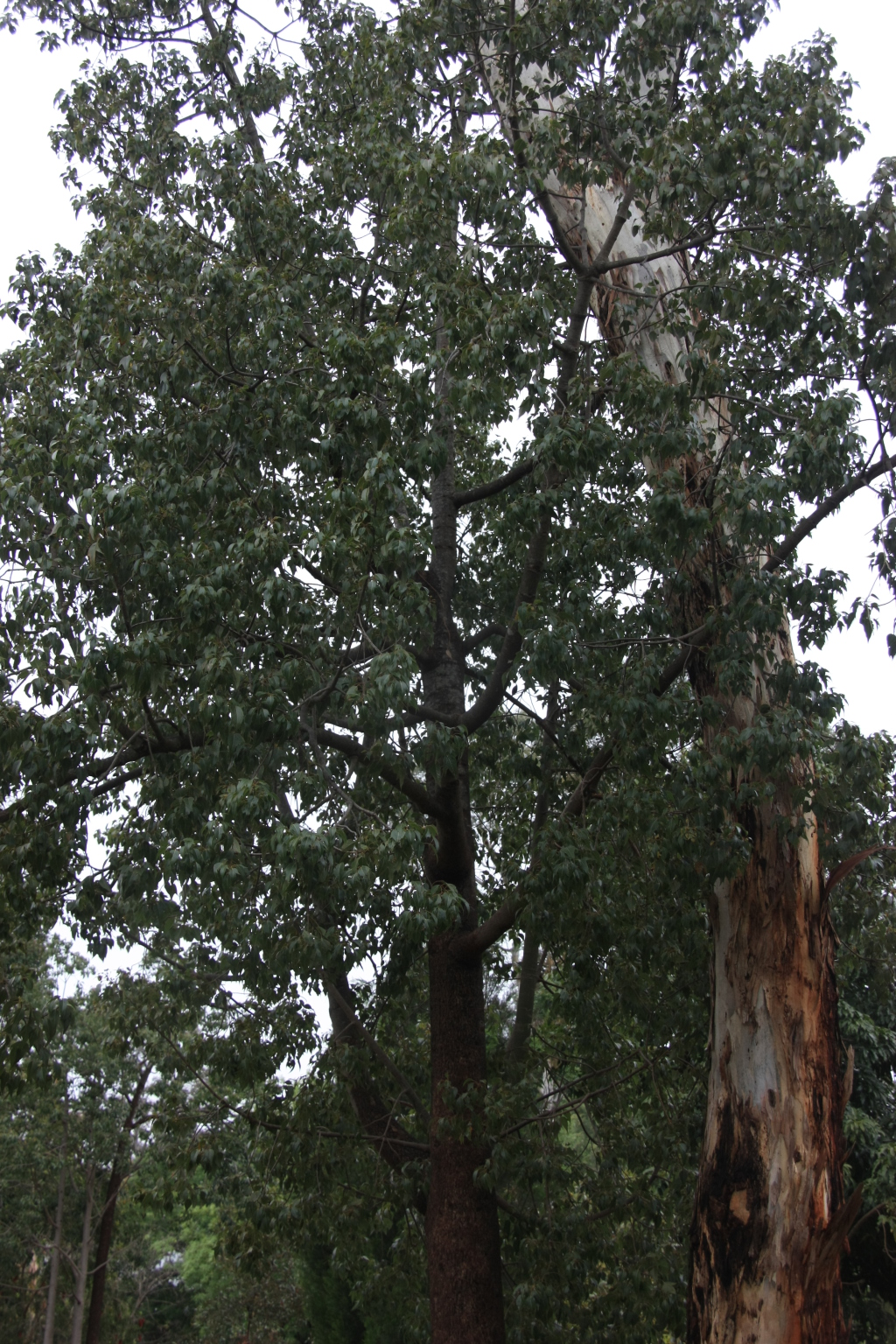Brachychiton populneus subsp. populneus
KurrajongTree 6–20 m high; trunk cylindric or slightly bulbous; bark grey to dark brown, shallowly fissured and tesselated. Leaves ovate to lanceolate, 5–12 cm long, 2–8 cm wide, entire or with 1 or 2 lobes to c. 1 cm long, shiny green above, paler or glaucescent below, glabrous or with a few stellate hairs on the petiole; petioles 2–10 cm long. Perianth (= calyx tube) 5(–6)-lobed, 6–12 mm long, outer surface glabrous or sparsely stellate-pubescent, cream or pale green, glandular-pubescent inside, pale green or creamy white and with red-brown speckles; carpels pubescent. Follicles 4–7 cm long, rostrate, glabrous outside, on stipes 2–4 cm long; seeds 6–22 per follicle, ovoid, smooth. Flowers Oct.–Jan.
MuM, Wim, VVP, VRiv, RobP, MuF, GipP, Gold, CVU, NIS, EGL, EGU, HSF, HNF, VAlp. In Victoria occasional in dry woodlands and open-forest in the north and north-east and rain-shadow areas of the east (e.g. Snowy River catchment) where sometimes a dominant in ‘dry’ rainforest communities on and below escarpments. The origin status of some populations such as at Nyah and near Koondrook beside the Murray River, and the Gippsland Lakes is uncertain.
Aboriginal people used the fibrous bark for making string and nets for fishing. They also ate young taproots and seeds. In some parts of Australia B. populneus is utilized as a fodder tree. It is extensively planted as an ornamental or shade tree.
Short, P.S. (1996). Sterculiaceae. In: Walsh, N.G.; Entwisle, T.J., Flora of Victoria Vol. 3, Dicotyledons Winteraceae to Myrtaceae, pp. 324–331. Inkata Press, Melbourne.
 Spinning
Spinning

